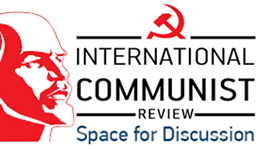The German attack against the USSR (June 1941) and the US entry into the war, after the Japanese attack on Pearl Harbour (December 1941), formed new conditions. From the onset of the German offensive, Great Britain, left without allies in Europe and under German air and naval attack, expressed its intention to cooperate with the USSR. In August 1941, Churchill and Roosevelt sent a joint message to Stalin and in October the US Congress included the USSR in the Lend-Lease Act, paving the way for the strengthening of the Red Army.
The new situation was again reflected in a change in the positions of the Comintern. The Secretary of its Executive Committee, Georgi Dimitrov, argued that the Nazi attack on the USSR had changed the character of the war and that it was now of the utmost importance to help speed up the crushing of fascism. He therefore called on communists not to set the goal of socialist revolution, but to take the lead in the national liberation movements and form alliances with those who wished to fight the Axis.
But, like WW I, WW II was the continuation and the inevitable conclusion of the inter-imperialist rivalries. It was also an imperialist war and therefore as unjust as the previous one. Both on the side of the Axis, which tried to redistribute the world, and on the side of the so-called democratic governments of the capitalist states, which tried to maintain their hegemonic position in the imperialist system.
On a class basis, the only new counteracting factor in the new imperialist conflict was the Soviet socialist power. From the standpoint of the USSR, the war was just; it was a struggle to save workers’ power, which was at the same time a stronghold, a source of inspiration and a beacon of hope for the working class of the world. The Soviet people made unprecedented sacrifices in this titanic struggle, precisely because, in fighting for the socialist homeland, they were defending the first workers’ state and the socialist relations of production that were then being established – everything that had contributed to the development of socialist production with the aim of social welfare. The contribution of socialist relations to the explosion of the productive forces was also reflected in the fighting capacity of the Red Army.
The war was also just on the part of the national liberation movements, which had the Communist Parties as their lifeblood and leaders. Their struggle was necessary to defend the interests of the workers and the people in a period of imperialist war and at the same time it was a school in which the working and popular masses learnt to organize and fight with a weapon in their hands. It was also an internationalist struggle that was necessary to strengthen the struggle of the Soviet people and the Red Army.
But this did not change the overall character of the war. The capitalist states fighting the Axis continued to wage an unjust war on behalf of the forces of class exploitation. Besides, in the course of the war, they did not cease their efforts to weaken both Germany and the Soviet Union, nor did they stop working to create postwar enclaves to undermine socialist construction. Moreover, for a long time, they avoided opening a second front in Europe, despite the persistent demands from the Soviet leadership. Basically, the USA and Great Britain wanted to support the USSR materially so that it could wear down the Axis powers.
Of course, the USSR benefited from the confrontation of the Axis with other capitalist states. Not mainly because it received crucial material support necessary to meet the demands of the war, but because the inter-imperialist contradictions also favored the Soviet objectives. For example, the conflict between the USA and Japan over control of the Pacific prevented the latter from attacking the Soviet eastern frontier, thus allowing the transfer of critical Red Army forces to the European eastern front.
However, the needs and priorities of the USSR’s foreign policy, as well as the necessary participation of communists in the national liberation struggle in their respective countries, did not justify the CP’s abandonment of the goal of overthrowing capitalist power. Similarly, the necessary struggle against the authorities of the occupying forces and their collaborators, and a certain coexistence of communists and bourgeois forces in this struggle, did not invalidate the class struggle in the occupied countries. On the contrary, in some cases, as in Greece, the mass participation of the working class and its allies in the national liberation struggle, combined with the simultaneous contempt of the bourgeois powers, created the conditions for a revolutionary situation and the conquest of revolutionary workers’ power at the time of the Axis defeat.
In general, in all countries, the anti-fascist bourgeois political forces were weakened either because they abstained from the resistance or because they organized small resistance groups staffed by former officials of the army and other state repressive mechanisms, intending to gather intelligence and carry out sabotage. They opposed the mass mobilization of the workers and the people precisely because it could be turned against the domestic capitalist power in the future. It was only after the development of the partisan armies led by the Communist Parties that the relative expansion of bourgeois organizations was put forward as an opposing force. Moreover, the anti-fascist bourgeois organizations did not hesitate to cooperate with the bourgeois forces collaborating with the Axis in a number of countries (Yugoslavia, Greece, Albania) when the escalation of the communist resistance and the imminent defeat of the occupation forces threatened the future of capitalist power.
The above proves that the bourgeois forces opposed to Nazism acted not only in their immediate but also in their long-term interests. The unfortunate thing is that the CPs did not do the same at a time when the class struggle was de facto sharpened with the aim of “who-whom”.
